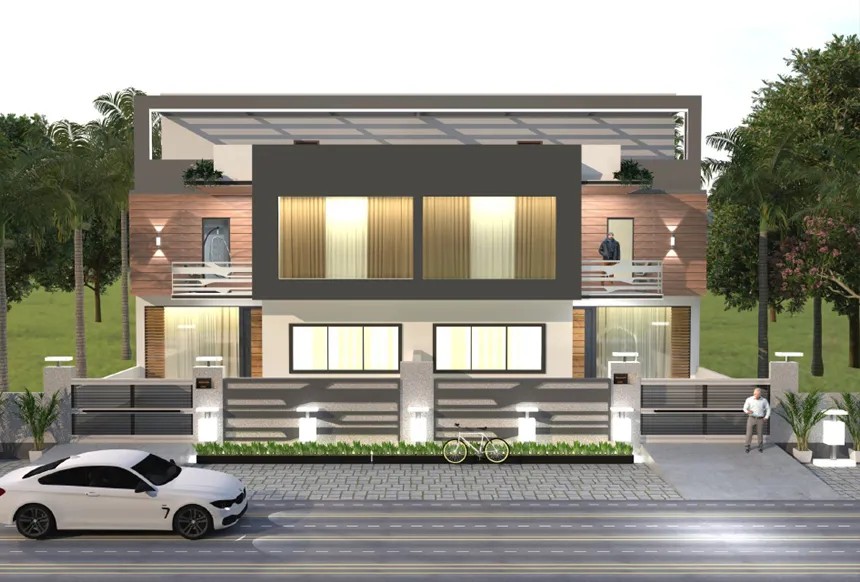Home is where the heart is, and when it comes to transforming houses into dream homes, the expertise of interior designers shines. The world of home interior design is a realm where creativity and functionality harmonize to create living spaces that reflect the personality, lifestyle, and aspirations of homeowners. In this exploration, we delve into the fascinating world of home interior design, highlighting its significance, the evolving trends that shape it, and the profound impact it has on the way we live, relax, and connect within the four walls we call home.
The Significance of Home Interior Design
Home interior design is more than just arranging furniture and selecting paint colors. It is a comprehensive approach to creating living spaces that balance aesthetics and functionality while enhancing the quality of life for homeowners. Here’s why home interior design is so significant:
- Personalization: Home interior design allows homeowners to personalize their living spaces. It’s an opportunity to infuse individuality into a home, creating an environment that resonates with personal style and preferences.
- Functionality: Well-designed interiors optimize the use of available space. They are tailored to the needs and routines of the household, making daily activities more efficient and enjoyable.
- Comfort and Well-Being: Comfortable and harmonious interiors contribute to the well-being of residents. The selection of furniture, lighting, and materials can create spaces that promote relaxation, tranquility, and happiness.
- Aesthetic Appeal: Aesthetics play a significant role in home interior design. A beautifully designed home creates a sense of pride and satisfaction for homeowners and serves as a welcoming space for family and guests.
- Value Addition: Investing in home interior design can significantly increase the resale value of a property. Potential buyers are often willing to pay a premium for a well-designed and aesthetically pleasing home.
- Practicality: Effective home interior design takes into account practical considerations, such as storage needs, traffic flow, and ease of maintenance, ensuring that the home functions smoothly.
Evolving Trends in Home Interior Design
Home interior design is a dynamic field that continually evolves to meet changing lifestyle preferences, technological advancements, and design trends. Here are some notable trends that are shaping the future of home interior design:
- Biophilic Design: Biophilic design principles incorporate elements of nature into interior spaces. This can include indoor plants, natural materials, and large windows that connect the indoors with the outdoors.
- Sustainable Design: Sustainability is a growing focus in home interior design. Designers are opting for eco-friendly materials, energy-efficient appliances, and green building practices to reduce environmental impact.
- Open Concept Living: Open floor plans continue to be popular, emphasizing spacious, interconnected living areas that promote social interaction and a sense of togetherness.
- Minimalism: Minimalist design principles emphasize simplicity, clean lines, and the use of negative space. It creates an uncluttered and calming atmosphere within the home.
- Smart Homes: The integration of smart home technology is on the rise. From voice-activated assistants to smart thermostats and lighting systems, homeowners are increasingly seeking tech-savvy interiors.
- Multifunctional Furniture: With the trend toward smaller living spaces, multifunctional furniture is gaining prominence. These pieces serve dual purposes, such as sofa beds, storage ottomans, and convertible dining tables.
The Impact of Home Interior Design
The impact of home interior design extends far beyond aesthetics; it influences the way we live, relax, and connect within our homes:
- Improved Quality of Life: Thoughtfully designed interiors enhance the overall quality of life. They provide comfortable and functional spaces that cater to the needs and preferences of the occupants.
- Enhanced Well-Being: Home interior design can positively affect the physical and mental well-being of residents. Spaces that prioritize natural light, ergonomic furniture, and calming color palettes contribute to a healthier and happier lifestyle.
- Efficiency and Productivity: Functional interiors optimize daily routines and activities. Well-organized kitchens, efficient home offices, and comfortable living rooms can boost efficiency and productivity.
- Emotional Connection: A well-designed home fosters an emotional connection with its occupants. It becomes a place of comfort, security, and self-expression, reflecting the homeowner’s personality and values.
- Sustainable Living: Sustainable interior design practices promote eco-conscious living. Energy-efficient appliances, eco-friendly materials, and water-saving fixtures contribute to a more sustainable and environmentally responsible lifestyle.
- Social Interaction: Thoughtful interior design encourages social interaction. Open living areas, inviting dining spaces, and cozy gathering spots create environments that facilitate connections with family and friends.
In conclusion, home interior design is a multidimensional discipline that transcends aesthetics to influence the way we experience and interact with our homes. It is a reflection of personal style and values, a facilitator of functionality and well-being, and a driver of sustainable and efficient living. As interior designers continue to adapt to evolving trends and technologies, they play a pivotal role in crafting living spaces that are both timeless and responsive to the changing needs and aspirations of homeowners. In the world of interior design, it is the fusion of creativity and functionality that allows designers to transform houses into cherished homes, elevating the quality of life for those who reside within their walls.

